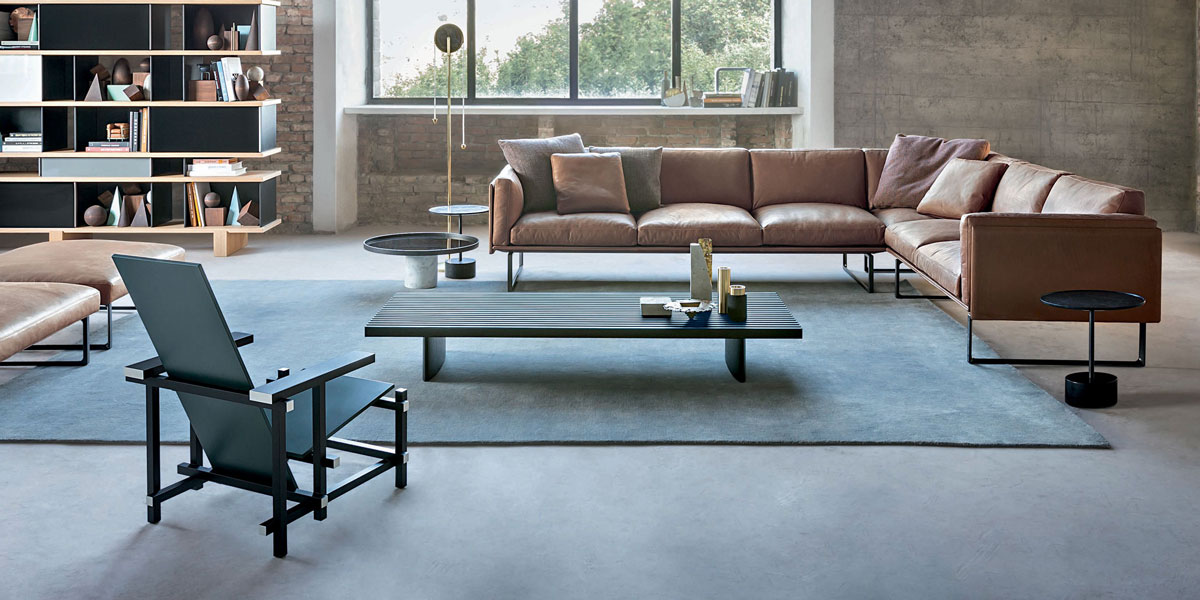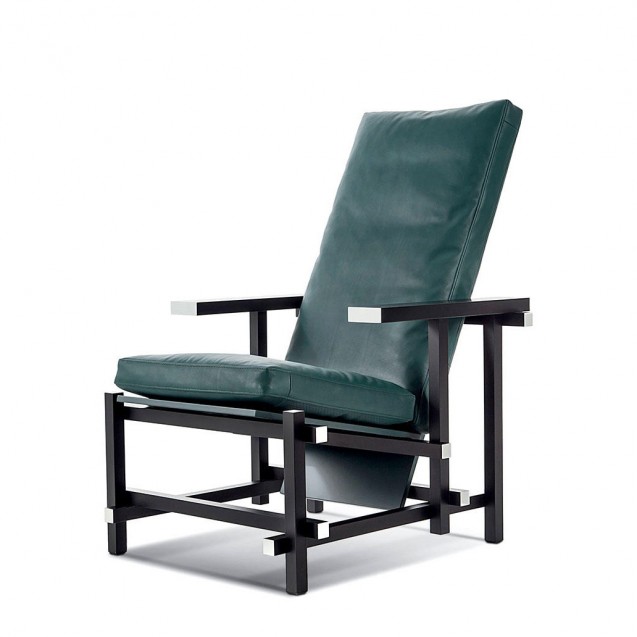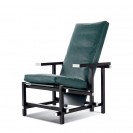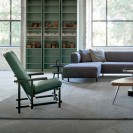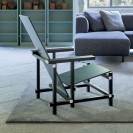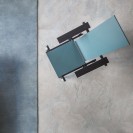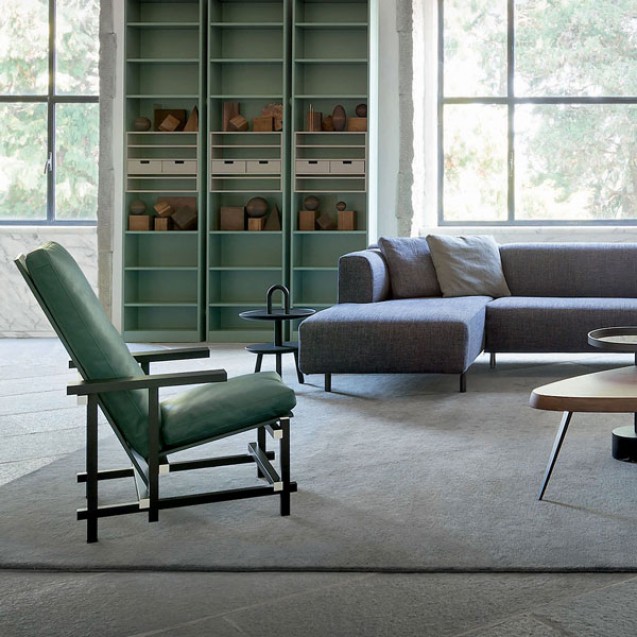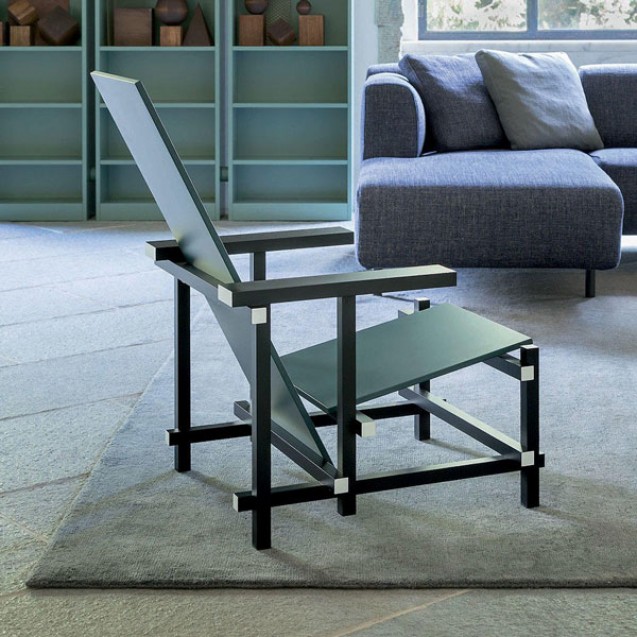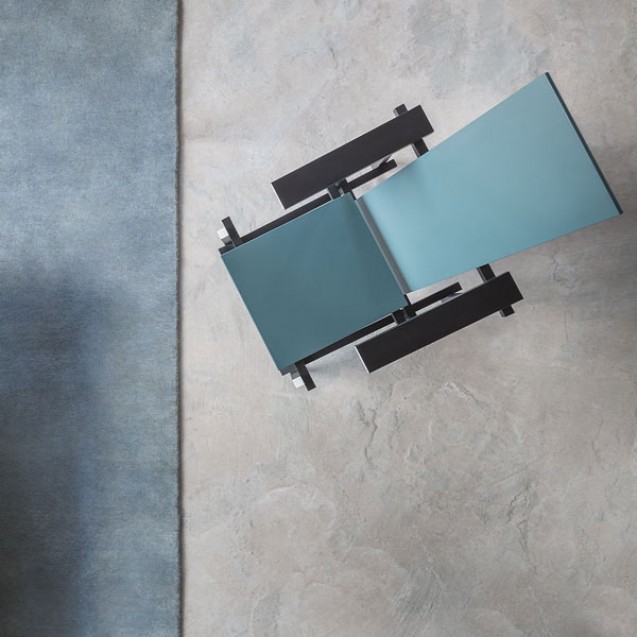635 Black Red And Blue (Zeilmaker version)
One of the versions of
the iconic model dated 1918.
The structure is in
black-stained beechwood with white contrasting parts.
Seat and back in green
lacquered multiplywood.
The armchair can have a
single seat and backrest cushion in fabric or leather.
The Black Red and Blue
(Zeilmaker version) born from Rietveld’s chromatic experimentation
While researching the
origins of the Red and Blue model in collaboration with the Rietveld
heirs, it emerged that the key idea of the first prototypes was based on the
concept of spatial organisation expressed through the monochrome tones of its
elements. The first version was in fact produced in 1918 in completely
unpainted wood.
In the following years
Rietveld proposed various examples, either monochrome or painted in different
colours, depending on the requirements of his customers and the interiors for
which the chairs were intended. As such, it comes as no surprise to find this
1920s version, presented as part of Cassina’s MutAzioni selection, created for
the school teacher Wicher Zeilmaker with a black frame with white ends and a dark
green painted seat and backrest.
It was Rietveld’s
ever-increasing involvement in the De Stijl movement that led him to also use
primary colours on this model in 1923, and as such the chair became a veritable
manifesto for the emerging neoplastic movement. Initially dubbed Slat chair,
Rietveld only gave it the name Red and Blue in the 1950s following its
chromatic evolution.
The various owners of
the different examples used the chair as an abstract-realist sculpture in their
interiors and, in some cases, as a simple tool for sitting on, adding cushions
to make it more comfortable, just like Cassina offers for the Black Red and
Blue today.
| About Designer | |
|---|---|
Gerrit Thomas Rietveld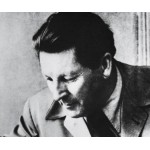 |
Gerrit Thomas Rietveld,
born in Utrecht on 24 June 1888, seems possessed of two personalities, each so
distinct that one might take his work to be that of more than one artist. The
first personality is that seen in the craftsman cabinet-maker working in a
primordial idiom, re-inventing chairs and other furniture as if no one had ever
built them before him and following a structural code all of his own; the
second is that of the architect working with elegant formulas, determined to drive
home the rationalist and neoplastic message in the context of European
architecture. The two activities alternate, overlap, and fuse in a perfect
osmosis unfolding then into a logical sequence. In 1918 Rietveld joined the “De Stijl” movement which had sprung
up around the review of that name founded the year before by Theo van Doesburg.
The group assimilated and translated into ideology certain laws on the dynamic
breakdown of compositions (carrying them to an extreme) that had already been
expressed in painting by the cubists: the “De Stijl” artists also carefully studied the
architectonic lesson taught by the great Frank Lloyd Wright, whose influence
was widely felt in Europe at that time. Collaborating first with
Robert van’t Hoff
and Vilmos Huszar, then with Theo van Doesburg and Cornelius van Eesteren,
Rietveld soon became one of the most distinguished interpreters of the
neoplastic message. Among his most important
works are:
the Schröder house at
Utrecht (1924); the “Row
Houses” at
Utrecht (1931-34); the Dutch pavilion at the Venice Biennial (1954); the
sculpture pavilion in the Rijksmuseum Kröller-Müller at Otterloo and the Van
Gogh Museum in Amsterdam (1955). Out of his equally important furniture,
Cassina has chosen for its own production: the “Red and Blue” (1918), the “Zig-Zag” (1934), the “Schröder 1” (1923), the “Utrecht” (1935) |
